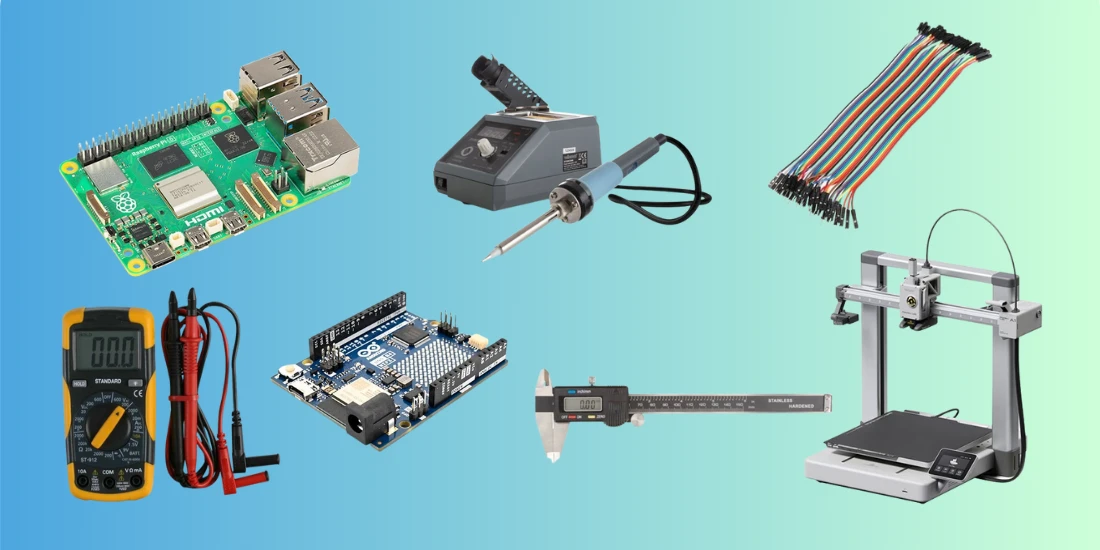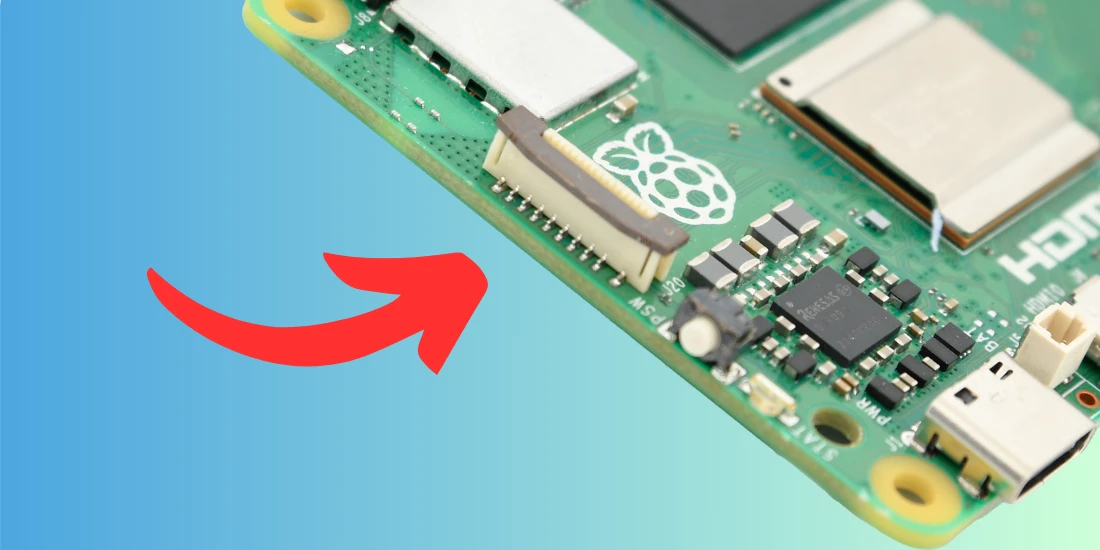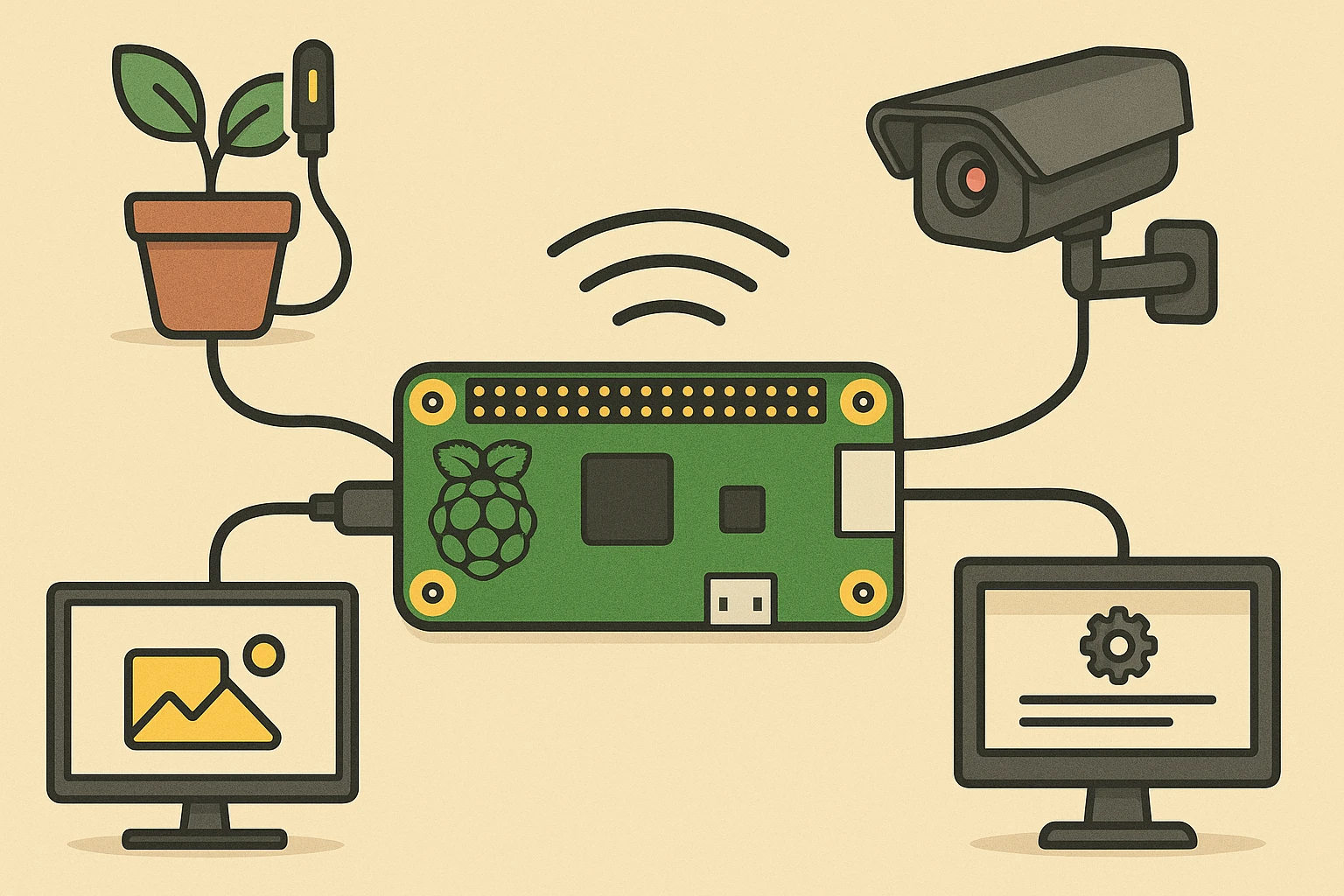5220+ reviews
Order by 16:00 for same day shipping
14 days return
DE
EN
Individual
Business
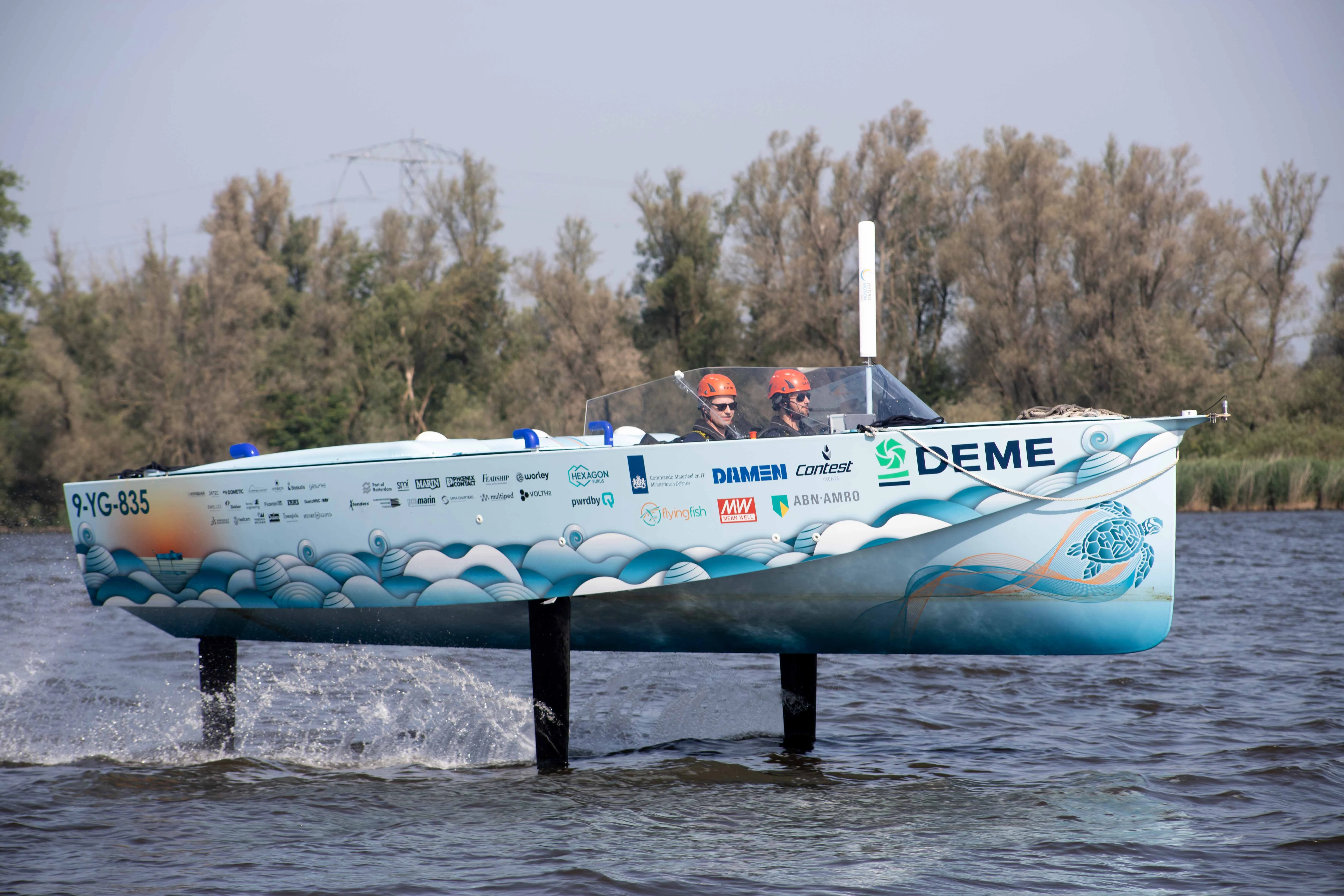
08/08/2025
Whitepaper: Raspberry Pi in the TU Delft Hydromotion Hydrogen Boat
Introduction
We are the TU Delft Hydro Motion Team of 2024, a group of 23 ambitious students from diverse study backgrounds. As a team, we mould the future of sustainable engineering and create a legacy of lasting impact. Our mission is to propel the maritime and energy industries towards a sustainable future. We do this by developing innovative technologies that emphasise the importance of integrating hydrogen-powered vessels.
Our journey started 18 years ago with the TU Delft Solar Boat Team. In the beginning of the Solar Boat Team, we sailed in inland waters and later on made the switch to the open sea where we becameWorld Champions for the first time in 2019. After proving the application of solar power as an alternative for fossil fuels in the maritime industry, we chalenged ourselves to prove the possibility of another green fuel option. In 2020 the Hydro Motion project was born, and the world’s first foiling hydrogen-powered boat was created. This culminated in Hydro Motion conquering the Open Sea Class of the Monaco Energy Boat Chalenge by becoming World Champions in 2023!
With al this effort, we noticed that the maritime sector was slowly moving towards a more sustainable industry and after al these great accomplishments we asked ourselves what our next step would be? The technology is there. The knowledge is there. Al we have to do now is implement it and use it to our benefit, but how ready is the world for a sustainable maritime industry sector right now? During the development of our boats, we have observed that not every waterway or harbour is equipped to support vessels operating on a renewable energy source similar to ours.
That is why, if we want to make the next step towards a sustainable maritime sector, it is time to push for systemic change. We are determined to compel companies and governments around the world to amend their legislation, mandating the inclusion of hydrogen-powered vessels and the development of additional infrastructure crucial for the green energy transition.
Together with our partners, we wi l design, build, test and sail a foiling hydrogen-powered boat in just one year. The strength of hydrogen lies in its endurance capacities due to its high energy density. In order to demonstrate this strength, we focus on the application of hydrogen fuel in seaworthy vessels to cover long distances. To show the capabilities of our boat, we wi l sail between the Netherlands and the United Kingdom.
We will set a world record and become the first fuly hydrogen-powered boat to cross the North Sea. Together, we can write history, and steer the future. Join us in our journey ful of chalenges, and welcome aboard the next wave.
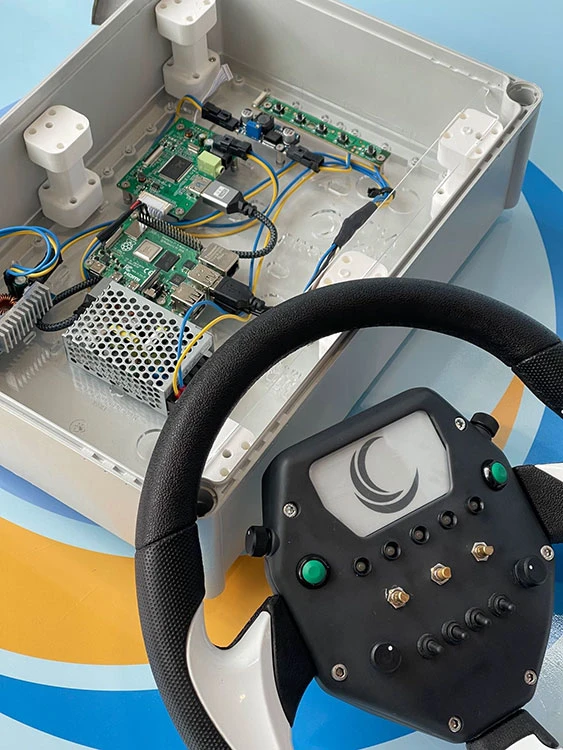
Raspberry Pi
This year, the fourth-generation Raspberry Pi finds its place in two vital subsystems aboard the boat. Both the boat’s dashboard screen and communication and information systems are under the control of a Raspberry Pi. The dashboard now includes a vibrant 15-inch colored HD display, presenting al relevant data to the pilots. Utilizing the Raspberry Pi proves to be an excelent solution for efficiently processing data and promptly updating the screen. Moreover, the communication system, crucial for the pilots' safety and efficiency, benefits greatly from the Raspberry Pi's assistance in ensuring reliability and stability.
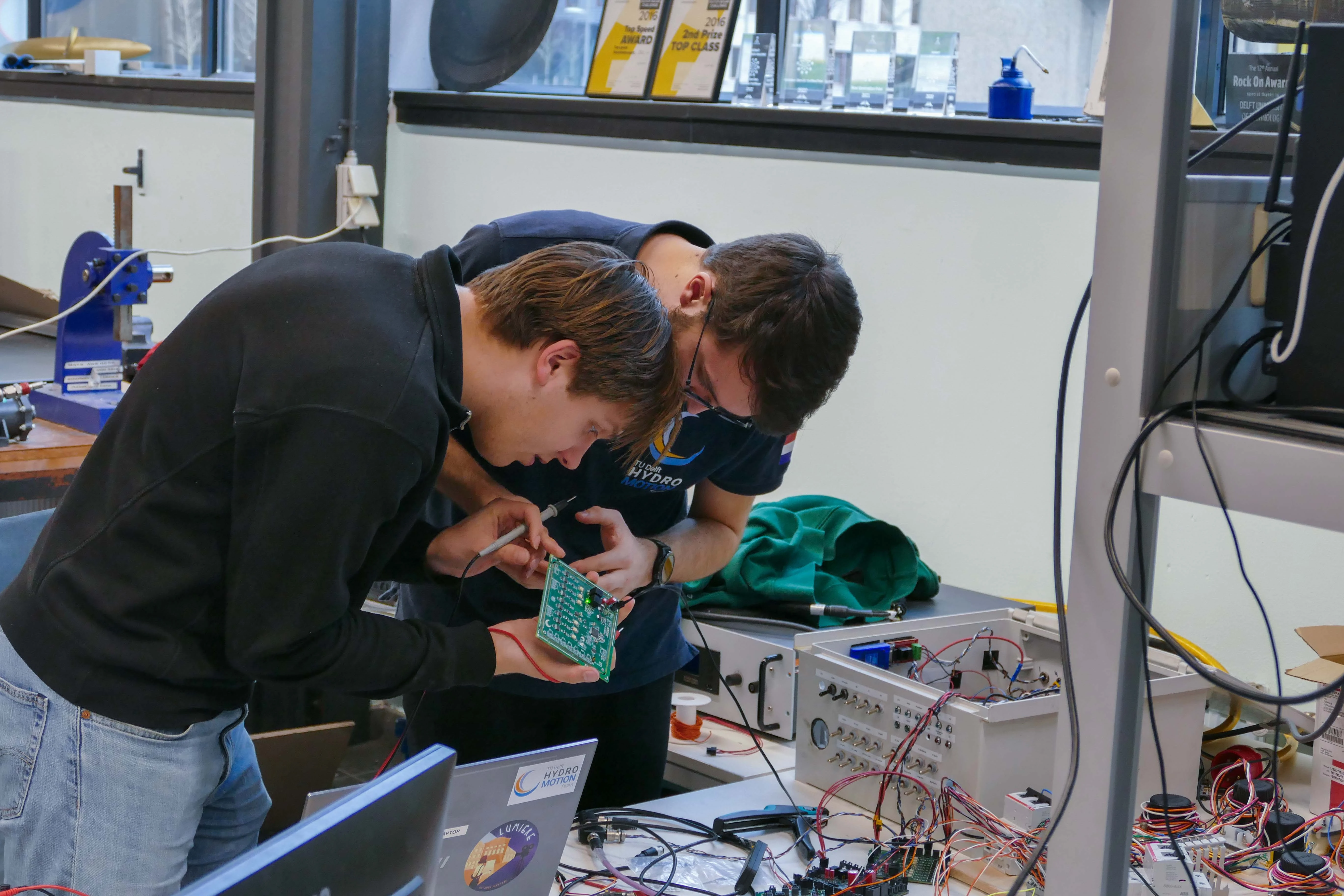
Dashboard Screen
Making sure pilots get what they need
Before we started designing, we looked at what pilots realy need. They need to know stuff like how fast they're going, how high they are above the water, and if everything on the boat is working right. So, we made sure our dashboard shows al this important info, like speed, height, and the status of different boat parts.
Dealing with different weather
Boats face al kinds of weather, so we wanted our dashboard to work wel no matter what. We made sure it's easy to see the info on the dashboard, even when it's rea ly sunny or dark outside. We used special screens to make sure the info stays clear in any light. Plus, we made the dashboard waterproof, so it won't get ruined if water splashes on it.
Helping pilots spot problems
If something goes wrong on the boat, pilots need to know as soon as possible. That's why we built alerts into our dashboard. If there's a problem, the dashboard wil tell the pilot right away, and it wi l even say which part of the boat has the issue. This helps pilots fix things quickly and keep sailing smoothly.
Making everything fit together
Wemadesureour dashboard works wel with al the other parts of the boat. We designed it to run on the same power as the rest of the boat. An extra converter in the screen’s casing ensures the Raspberry Pi gets powered with the correct voltages and power. This makes it easier to instal and maintain. Plus, it's built to last, so it wi l keep working even in tough conditions. Also, the built-in ethernet connections ensures data can be read and sent quickly.
Showing info clearly
Our main goal was to make sure pilots can easily understand al the info on the dashboard. We made the displays simple and easy to read, so pilots can make smart decisions quickly and safely.
In the end, our boat dashboard is a big step forward in making boat navigation easier and safer. It's packed with features pilots need, it works wel in any weather, and it's designed to last. With our dashboard, pilots can sail confidently, no matter where their journey takes them.
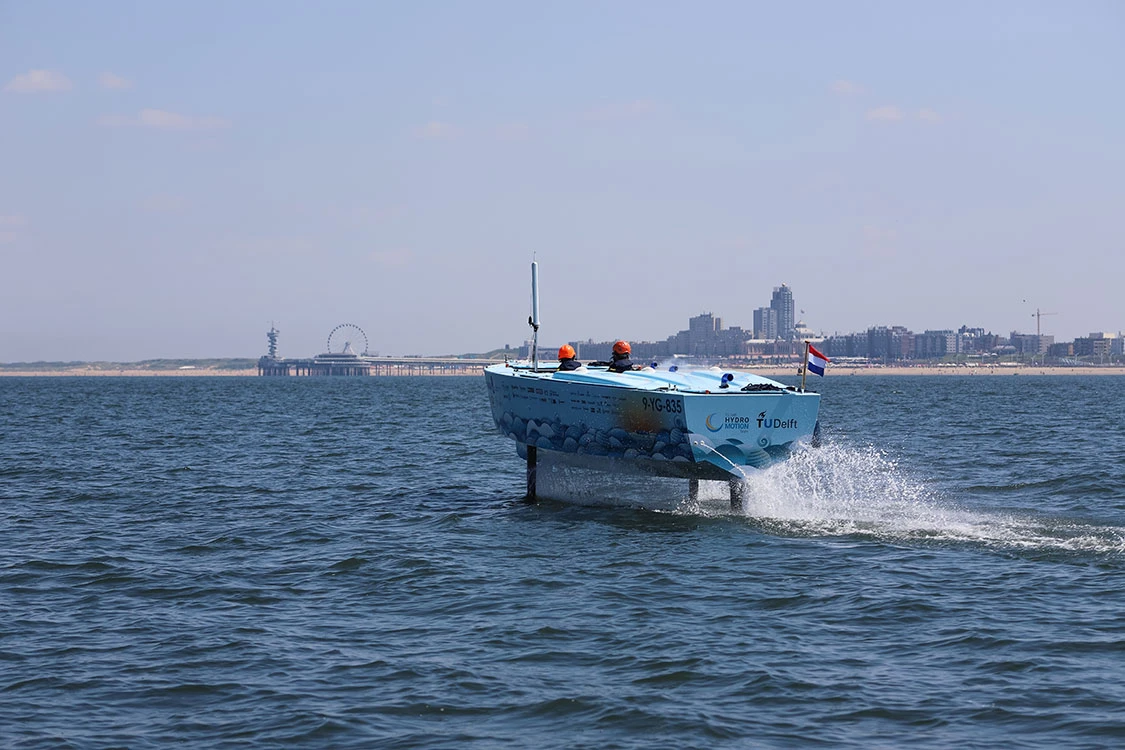
Communication and data acquisition system
Making communication possible
At the beating heart of the communication system in the boat is another Raspberry PI, this one connected to the headsets the pilots wear. It automaticaly connects to shore when the boat is turned on so the pilots can be heard at al times. We use open source tools like Mumble, which is an audio chat server, and its headless client Talkkonnect, running on the Raspberry PI. This ensures a smooth and worry free startup where audio gets connected without a single action of the pilots.
More than just audio
Next to audio we also use the Raspberry PI to gather data in the boat. We use a central CAN (Controler Area Network) bus system to communicate between al systems in the boat. Al sensor readings and commands are sent here so when monitored this can be used to further analyse data to troubleshoot and fix problems that arise during testing. We use a Raspberry Pi together with a CAN converter to monitor the bus and then translate and store this data in an open source Grafana+InfluxDB stack.
Safely acquiring data and audio
Putting al systems together, we can, with the help of Electronics For You, providing al these Raspberry Pi’s, sail the North Sea safely and become the first ever hydrogen powered to cross the North Sea, showing the world the potential of hydrogen in the maritime industry.
